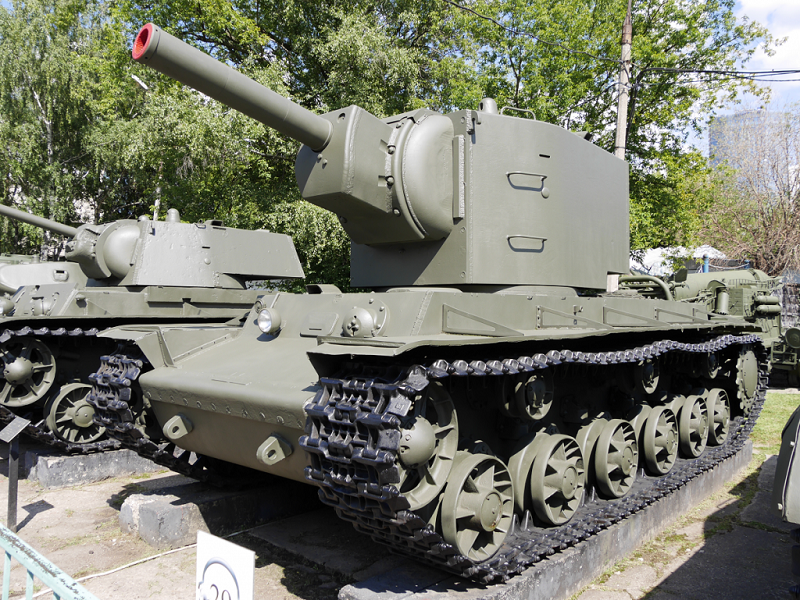The heavy tank KV-2 of the 1940 model. Armor – 75 mm. Armament: 1 howitzer (152 mm), 3 machine guns (7.62 mm). The speed is 34 km / h. Crew – 6 people.
Museum of the Soviet Army, Moscow.
The Kliment Voroshilov (KV) tanks are a series of Soviet heavy tanks named after the Soviet defence commissar and politician Kliment Voroshilov who operated with the Red Army during World War II. The KV tanks were known for their heavy armour protection during the early stages of the war, especially during the first year of the German invasion of the Soviet Union. In certain situations, even a single KV-1 or KV-2 supported by infantry could halt German formations. The German Wehrmacht at that time rarely deployed its tanks against KVs, as their own armament was too poor to deal with the “Russischer Koloss” – “Russian Colossus”.
The KV tanks were practically immune to the 3.7 cm KwK 36 and howitzer-like, short-barreled 7.5 cm KwK 37 guns mounted, respectively, on the early Panzer III and Panzer IV tanks fielded by the invading German forces. Until the Germans developed more effective guns, the KV-1 was invulnerable to almost any German weapon except the 8.8 cm Flak gun.
KV-2 (204) – A heavy assault tank with the M-10 152 mm howitzer, the KV-2 was produced at the same time as the KV-1. Due to the size of its heavy turret and gun, the KV-2 was slower and had a much higher profile than the KV-1. Those captured and used by the German Army were known as (Sturm)Panzerkampfwagen KW-II 754(r). Few were produced due to its combat ineffectiveness, mainly the decreased speed due to the weight of the new gun and turret. Due to an increase in turret weight from the expanded dimensions and a heavier gun, the turret traverse mechanism could work only on level ground.











